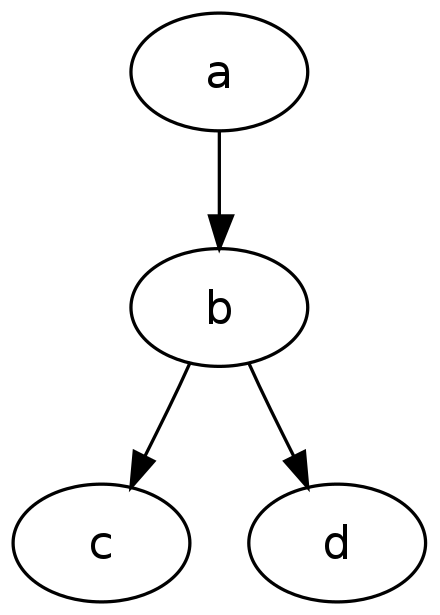https://github.com/jinagamvasubabu/ltreevisualizer
A golang library to visualize postgres ltree type data using DOT language and Graphviz
https://github.com/jinagamvasubabu/ltreevisualizer
display golang hacktoberfest ltree ltree-extension postgresql visualization
Last synced: 3 months ago
JSON representation
A golang library to visualize postgres ltree type data using DOT language and Graphviz
- Host: GitHub
- URL: https://github.com/jinagamvasubabu/ltreevisualizer
- Owner: jinagamvasubabu
- License: apache-2.0
- Created: 2021-08-21T04:10:56.000Z (about 4 years ago)
- Default Branch: main
- Last Pushed: 2021-10-08T06:52:04.000Z (almost 4 years ago)
- Last Synced: 2025-04-21T16:41:15.562Z (6 months ago)
- Topics: display, golang, hacktoberfest, ltree, ltree-extension, postgresql, visualization
- Language: Go
- Homepage:
- Size: 293 KB
- Stars: 16
- Watchers: 1
- Forks: 1
- Open Issues: 0
-
Metadata Files:
- Readme: README.md
- License: LICENSE
Awesome Lists containing this project
README
# Ltree Visualizer
[](https://circleci.com/gh/jinagamvasubabu/ltreevisualizer)
[](https://goreportcard.com/report/github.com/jinagamvasubabu/ltreevisualizer)
[](https://godoc.org/github.com/jinagamvasubabu/ltreevisualizer)
[](https://opensource.org/licenses/Apache-2.0)
[](https://badges.pufler.dev)
A golang library to visualize or display postgres ltree type data directly from Postgres DB using DOT language and Graphviz.

# What is Ltree?
Ltree is a data type which is used to represent the hierarchical tree-like structures in flat rows and columns in
postgres DB For more info-refer this https://www.postgresql.org/docs/9.1/ltree.html
Sample Hierarchy:

# why do we need this library ?
Ltree Labels are separated using Dot `.` like `1.2.3.4` and it is not easy to visualize like a tree.
This Library can produce output into two different formats:
* DOT Graph
* Image
# DOT Graph:
DOT is a graph description language, using this language we can represent Directed, Undirected and FlowCharts. https://en.wikipedia.org/wiki/DOT_(graph_description_language)
```go
digraph graphname {
a -> b -> c;
b -> d;
}
```

# Config:
```go
//Visualizer config
type Visualizer struct {
LogLevel log.Level
RankDir string
PostgresURI string //Example postgresql://postgres:postgres@localhost:5432/taxonomy?sslmode=disable
Query string //select id, name, path from table1 //columns specified in this example should match or use resultset alias if your column names are different
FetchFromDB bool
}
```
RankDir: Sets the direction of tree layout(https://www.graphviz.org/docs/attrs/rankdir/) and supported values are
* TB (Top to Bottom)
* RL (Right to Left)
* LR (Left to Right)
* BT (Bottom to Top)
Note: Default is TB
FilePath: FilePath to save the image, this parameter is optional for `GenerateDotGraph`.
Note: Default value of FilePath is `graph.png`
You can generate image of your ltree data using two ways:
* Directly fetch the data from your Postgres DB
* using Interim JSON file
## DB Way (Directly fetch the data from your Postgres DB):
```go
//Visualizer config
type Visualizer struct {
LogLevel log.Level
RankDir string
PostgresURI string //Example postgresql://postgres:postgres@localhost:5432/taxonomy?sslmode=disable
Query string //select id, name, path from table1 //columns specified in this example should match or use resultset alias if your column names are different
FetchFromDB bool
}
```
1. Provide `PostgresURI` which your app can connect Eg: `postgresql://postgres:postgres@localhost:5432/taxonomy?sslmode=disable`
2. Provide `Query` to fetch the data of your Ltree and your query result set should contain id, name, path
3. Set `FetchFromDB` to true
```go
import "github.com/jinagamvasubabu/ltreevisualizer"
import "github.com/sirupsen/logrus"
l := ltreevisualizer.Visualizer{
PostgresURI: "postgresql://postgres:postgres@localhost:5432/taxonomy?sslmode=disable",
Query: "select id as id, name as name,path as path from table"
}
resp, err := l.ConvertLtreeDataToImage(context.Background(), ltreevisualizer.VisualizerSchema{})
fmt.Println(resp)
```
## Using Interim Json File:
If you don't want to connect to DB and fetch the results then you can follow this way by using interim JSON file
```go
//VisualizerSchema Contract to send to ltreevisualizer
type VisualizerSchema struct {
Data []data `json:"data"`
}
type data struct {
ID int32 `json:"id"`
Name string `json:"name"`
Path string `json:"path"`
Type string `json:"type"`
}
```
Refer `data.json` file under examples directory for sample data
* get `LtreeVisualizer`
```
go get github.com/jinagamvasubabu/ltreevisualizer
```
* import and use it like below for to generate the output in DOT graph string:
```
import "github.com/jinagamvasubabu/ltreevisualizer"
import "github.com/sirupsen/logrus"
l := ltreevisualizer.Visualizer{}
resp, err := l.GenerateDotGraph(context.Background(), //json data)
fmt.Println(resp)
```
* import and use it like below for to generate the output as an image:
```
import "github.com/jinagamvasubabu/ltreevisualizer"
import "github.com/sirupsen/logrus"
l := ltreevisualizer.Visualizer{}
err := l.ConvertLtreeDataToImage(context.Background(), //json data)
```
Note: This will create a graph.png image if you don't specify Filepath
You can refer `examples` directory for more info
# How to test?
Refer `visualizer_test.go` for sample tests